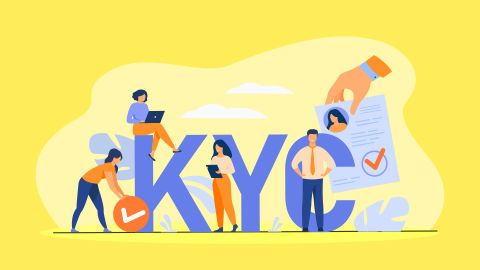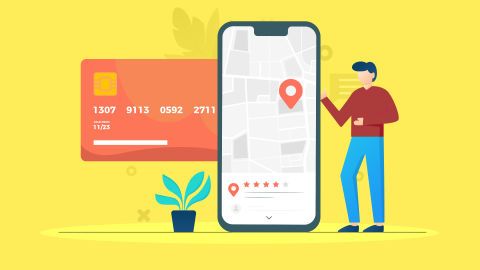This article will compare the iPhone 13 and iPhone 14 in detail. We will look at their features, strengths, and weaknesses. By the end, you will know which model gives you better value for your money and how to buy it using flexible EMI options.
Overview of iPhone 13
The iPhone 13 came out in September 2021. It has a strong aluminium frame and Ceramic Shield front glass that makes it tough. The phone has a 6.1-inch Super Retina XDR OLED screen that shows bright colours and deep blacks.
The A15 Bionic chip with a 4-core GPU powers this phone. This makes it fast for games and apps. The iPhone 13 has two 12 MP cameras (wide and ultra-wide) that take clear photos and can record 4K video. The battery lasts about 19 hours of talk time and works with MagSafe charging.
Overview of iPhone 14
Released in September 2022, the iPhone 14 builds on what made the iPhone 13 great. It keeps the same basic look but adds new colour options. The screen is still a 6.1-inch Super Retina XDR OLED, but the colours look even better.
The iPhone 14 uses the same A15 Bionic chip but has a better 5-core GPU for improved graphics. Its camera system still has two 12 MP lenses but adds the Photonic Engine for better photos in low light. The battery lasts about 20 hours of talk time, slightly longer than the iPhone 13. It comes with iOS 16, which has more features than iOS 15.
Feature comparison: iPhone 13 vs iPhone 14
| Feature | iPhone 13 | iPhone 14 |
| Design and build quality | Aluminium frame, Ceramic Shield front | Same materials with slight refinements |
| Display | 6.1-inch Super Retina XDR OLED | Same size with better colour accuracy |
| Performance and processor | A15 Bionic with 4-core GPU | A15 Bionic with 5-core GPU |
| Camera upgrades | Dual 12 MP cameras | Dual 12 MP with Photonic Engine |
| Battery life and charging | Up to 19 hours talk time | Up to 20 hours talk time |
| Software and iOS versions | Shipped with iOS 15 | Shipped with iOS 16 |
Design and build quality
- Both phones have aluminium frames and glass backs, making them look premium. These materials also help the phones stand up to daily use.
- The iPhone 14 offers new colour options that were not available for the iPhone 13. This gives buyers more choices to match their style.
- Button placement and size are the same on both models. This means cases and accessories might work for both phones.
- Both models have the same IP68 water resistance rating. They can survive in water up to 6 meters deep for 30 minutes.
- The iPhone 13 and 14 both have 6.1-inch Super Retina XDR OLED screens. These screens make colours look rich and blacks look truly dark.
- The iPhone 14 has slightly better colour accuracy than the iPhone 13. This means photos and videos look truer to life.
- Both phones have the same screen resolution and pixel density. Text and images look equally sharp on both devices.
- The screens on both models have the same brightness levels for outdoor use. You can read them well even in sunlight.
- Both phones use the A15 Bionic chip, but the iPhone 14 has a 5-core GPU instead of 4 cores. This makes graphics run about 20% faster on the iPhone 14.
- Daily tasks like browsing and using apps feel the same on both phones. Most users will not notice a difference in basic performance.
- The iPhone 14 handles graphic-heavy games slightly better than the iPhone 13. Gamers might prefer the newer model for smoother gameplay.
- Both phones have the same amount of RAM. They can handle multitasking equally well.
- Both models have dual 12 MP camera systems with wide and ultra-wide lenses. They both take excellent photos in good lighting.
- The iPhone 14 adds the Photonic Engine for better low-light photography. Night photos look clearer and have less noise on the iPhone 14.
- Both phones record 4K video at 60 frames per second. The video quality is professional on both devices.
- The front cameras are 12 MP on both phones, but the iPhone 14 has better low-light selfie performance. This means your self-portraits look better in dim lighting.
- The iPhone 14 offers about 20 hours of talk time versus 19 hours on the iPhone 13. This small improvement means slightly longer use between charges.
- Both phones support MagSafe and Qi wireless charging. You can charge them without plugging in a cable.
- Charging speeds are the same for both models. They take about the same time to reach a full battery.
- Both phones have similar standby time. They hold their charge well when not in use.
- The iPhone 13 came with iOS 15, while the iPhone 14 shipped with iOS 16. Both can be updated to newer versions as they come out.
- Both phones will receive software updates for many years. The iPhone 14 will likely get one extra year of updates.
- iOS 16 brought new lock screen customization options and features. The iPhone 13 can also get these features through updates.
- Both phones run the same apps with similar performance. You will not miss out on app compatibility with either choice.
| iPhone 13 | iPhone 14 | |
| Pros | Lower price point makes it more affordable | Better low-light photography with the Photonic Engine |
| A15 Bionic chip still handles all apps and games smoothly | Enhanced 5-core GPU improves graphics performance | |
| Camera system takes beautiful photos and videos | Slightly longer battery life than the iPhone 13 | |
| Battery life easily lasts a full day for most users | Shipped with iOS 16 with more features out of the box | |
| Cons | Lacks the camera improvements found in the iPhone 14 | Higher price point than the iPhone 13 |
| Has a 4-core GPU instead of the 5-core in iPhone 14 | Design is very similar to iPhone 13 | |
| Started with an older iOS version | Improvements may not justify an upgrade from iPhone 13 | |
| Slightly shorter battery life than the iPhone 14 | Uses the same basic chip as iPhone 13 |
Pros and Cons of iPhone 13
Pros:
- Lower price point makes it more affordable. You can save money while still getting a premium phone.
- A15 Bionic chip still handles all apps and games smoothly. Performance is excellent for daily use and most tasks.
- Camera system takes beautiful photos and videos. Most users will be very happy with the image quality.
- Battery life easily lasts a full day for most users. You will not need to charge mid-day with normal use.
- Lacks the camera improvements found in the iPhone 14. Low-light photos are not as clear as on the newer model.
- Has a 4-core GPU instead of the 5-core in iPhone 14. Some graphics-intensive games might not run as smoothly.
- Started with an older iOS version. Some features came later through updates.
- Slightly shorter battery life than the iPhone 14. Heavy users might notice the difference.
Pros
- Better low-light photography with the Photonic Engine. Your evening and indoor photos will look clearer.
- Enhanced 5-core GPU improves graphics performance. Games and video editing are smoother.
- Slightly longer battery life than the iPhone 13. This gives you extra usage time when needed.
- Shipped with iOS 16 with more features out of the box. You get the latest software experience from day one.
- Higher price point than the iPhone 13. You pay more for incremental improvements.
- Design is very similar to iPhone 13. The update might not feel significant if you care about looks.
- Improvements may not justify an upgrade from iPhone 13. The differences are subtle rather than revolutionary.
- Uses the same basic chip as iPhone 13. It is not a major performance leap forward.
If you are looking for value, the iPhone 13 offers almost everything the iPhone 14 does at a lower price. The core experience is very similar. However, if you take many photos in low light or play graphics-intensive games, the iPhone 14 might be worth the extra cost. The improved camera system and better GPU make a difference in these specific cases.
For most users, the iPhone 13 hits the sweet spot of performance and price. But if having the latest features matters to you, or if you find a good deal on the iPhone 14, it is also an excellent choice. Check your pre-approved offer on the Bajaj Finserv Insta EMI Card to see what fits your budget. With EMI options, the price difference between models becomes more manageable.
How to Buy iPhone 13 and iPhone 14 On Easy EMI
The Bajaj Finserv Insta EMI Card makes owning an iPhone simple and affordable. Instead of paying the full price at once, you can split the cost into Easy EMIs. This helps you manage your budget while still getting the phone you want. The card gives you a pre-qualified card loan offer amount of up to Rs. 3 lakh, which you can use across multiple purchases.
Online process
- Visit any major e-commerce website that partners with Bajaj Finserv. These include Amazon, Flipkart, and the Apple Online Store.
- Add your chosen iPhone model to your cart and proceed to checkout. Make sure the site offers EMI options.
- Select Bajaj Finserv Insta EMI Card as your payment method. Enter your card details when prompted.
- Choose an EMI tenure between 1 and 60 months. Longer terms mean smaller monthly payments.
- Complete the purchase with a one-time password. Your iPhone will be delivered, and EMIs will start as per the schedule. Track your payments through the Bajaj Finserv app.
- Visit any Bajaj Finserv partner store or Apple authorised reseller. There are over 1.5 lakh partner stores across more than 4,000 cities in India.
- Select the iPhone model you want to purchase. Ask about any special offers that might be available.
- Inform the store representative that you want to use your Bajaj Finserv Insta EMI Card. Show your card or provide your details.
- Choose your preferred EMI tenure between 1 and 60 months. The representative will process your purchase.
- Complete the transaction securely with an OTP, and take your new iPhone home the same day. Your EMIs will begin as scheduled.
To get a Bajaj Finserv Insta EMI Card, you need to meet these basic requirements:
- Be an Indian citizen between 21 and 65 years of age.
- Have a regular income source. This helps show you can make the EMI payments.
- Maintain a good credit score per Bajaj Finserv risk policies. This demonstrates your creditworthiness.
- Provide valid documents including PAN card, Aadhaar card, and address proof. These verify your identity and address.
- Share bank account information and IFSC code for e-mandate registration. This sets up automatic EMI payments.
Conclusion
The difference between iPhone 13 and 14 comes down to incremental improvements rather than major changes. The iPhone 14 offers better low-light photography, enhanced graphics performance, and slightly longer battery life. For many users, the iPhone 13 provides excellent value while the iPhone 14 brings refinements for those who want the latest features.
Whichever iPhone you choose, the Bajaj Finserv Insta EMI Card makes it more affordable through easy monthly payments. With pre-qualified card loan offer amounts of up to Rs. 3 lakh and flexible repayment tenures from 1 to 60 months, you can get the iPhone that meets your needs without straining your budget.
Why wait to upgrade your smartphone experience? Check your pre-approved offer today and take home an iPhone 13 or iPhone 14 with minimal upfront cost. The choice between Android and iOS is personal, but with Bajaj Finserv Insta EMI Card, affording the iPhone you want is easier than ever. Your journey to a premium smartphone experience starts now!
Biggest upcoming sale in India in 2025
Top platforms to buy products with Bajaj Insta EMI Card
Check more




